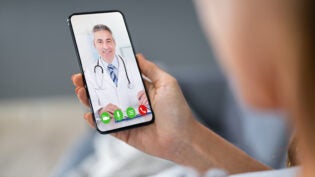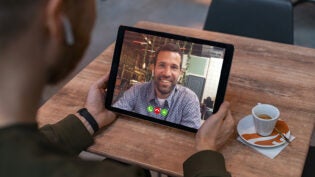Home > Technology > Telecom >
4 Ways to Improve Office Productivity and Communication
By: Scott Resnick

Your phone system may already have Unified Communications (UC) capabilities. If so, that means that you have been boosting your staff’s productivity, reducing operating costs, opening up more options for how to make decisions, and being able to navigate that process more quickly. The reach of UC is both internal and external — connecting you with customers, vendors, investors, and regulatory agencies.
1. Unified Communications
If you haven’t yet, but are considering integrating UC into your current business phone system, the result will be seamless. In real time, UC provides you with:
- Instant Messaging, which prevents the usual delays of email and voice
- Presence Information, indicating when your contact is online and the two of you can communicate immediately
- Video Conferencing, for bringing all relevant parties into the room
- Interactive Data Sharing, which makes it possible for everyone in the loop to participate
- Speech Recognition, a useful tool that eliminates standard time-consuming manual inputs, such as keying in numbers, which can alienate customers and drive away business
2. Auto Attendants
The Automatic Attendant — or “Auto Attendant” — ought to be part of your integrated business phone system. You can make any number of customizations to suit your business needs, but the following functions are the essential services that the system provides:
- Direct callers to exactly the right departments and people
- Leave messages with those contacts
- Transmit specific information such as hours and locations
- Provide the option to speak with a live person
This can make a small business appear to be a large one. Also, it mitigates callers’ frustrations: no longer will they have to explain in detail what they want. In addition, it saves the company from having to employ several live receptionists or, as they are sometimes called, “first responders.”
The challenge with the Auto Attendant is to align its configuration with current best practices. For example, research and experience show that the initial greeting should be brief and avoid platitudes such as “we value your business.” Also, the listing of options should reflect caller demographics. If most callers are Millennials, then they are probably comfortable with automated systems. But older customer segments would welcome a little hand holding. Know your customer base before you configure your Auto Attendant.
3. Interactive Voice Response Solutions (IVRS)
In this over-communicative society, many constituencies, be they clients or vendors, prefer to handle routine tasks automatically. That’s where the Interactive Voice Response Solution (IVRS) comes in. If the Auto Attendant functions as a hybrid traffic cop and information bureau, then the IVRS actually facilitates business interactions, including purchases, scheduling, order processing, and confirmation or canceling of appointments.
No matter how tech-savvy your customers are, if your IVRS is poorly implemented, you risk driving them away. Be careful that you don’t commit one of the common missteps when developing your system. These can include a poorly structured menu, unnecessarily long procedures for regular transactions, or inaccurate voice recognition. The end-to-end customer experience must be at the forefront of your consideration, rather than what’s most expedient for your business. Don’t get bogged down in logistics or internal complexities. The goal is to facilitate a breezy, secure interaction with your customers.
4. Headsets Enabled for VoIP (Voice over Internet Protocol)
Customers and other constituencies important to your business value immediate, convenient communication. The people inbound callers need to contact may be salespeople on the road, technology experts based overseas, or the telecommuting staff who operate remotely.
You can provide that kind of instant seamless access through VoIP (Voice over Internet Protocol) headsets; a two-way system that allows you to connect your staff, wherever they are located, hands-free. VoIP systems differ from traditional phones because they are linked via the Internet, rather than through the conventional, analog public switched telephone network.
This allows callers to reach their contact through one number directly. Given that the system is mobile, rather than locked into office landlines, it’s easier to reach that person immediately. Staff members, no matter where they are geographically based, have the same business phone system features that they would if they were operating from a permanent desk onsite, including conferencing capabilities. If there is a decision to made, all those in the loop can parachute into the conference call. Equipping them with headsets allows them to become even more productive by multi-tasking.
All of these business phone system tools are scalable. Through updates and additions, they will continue to improve office productivity. In addition, you and your team can adapt and develop the technology as needed to serve both your customers and your internal communications best.
This article was originally published by TTI Houston
Published: November 24, 2014
2298 Views
2298 Views














